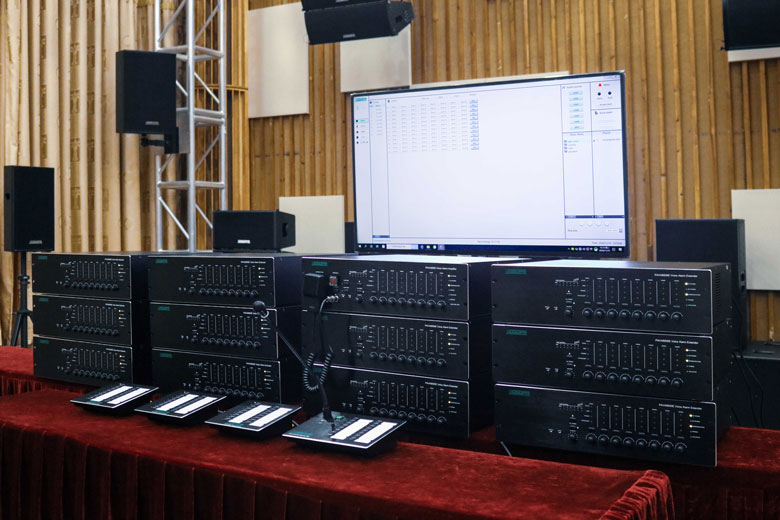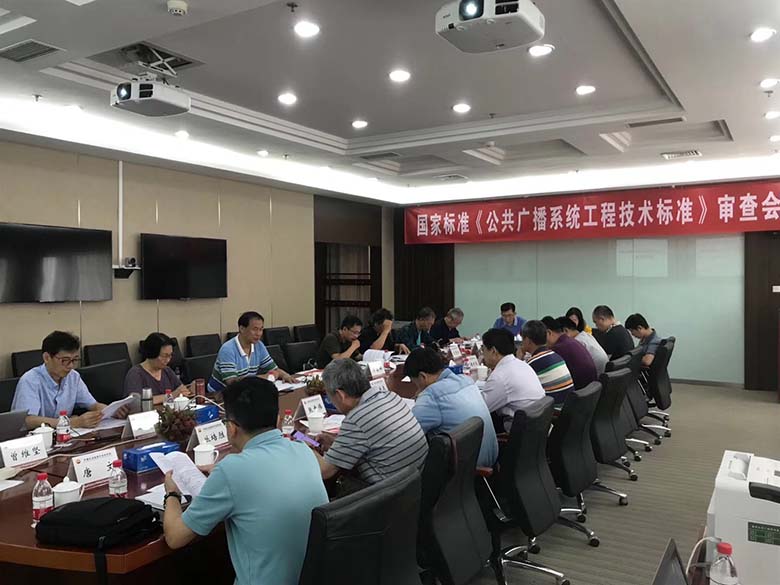
In modern business and conference activities, the conference audio system plays a crucial role. It not only affects the smooth proceedings of the meeting but also directly impacts the auditory experience and communication effectiveness of the participants. So, what is a conference audio system? This article will provide a detailed analysis of the definition, composition, features, and application scenarios of conference audio systems.
As the name suggests, a conference audio system refers to the sound system specifically used in conference settings. It integrates audio sources, control equipment, peripheral devices, and reproduction devices, aiming to provide clear, distortion-free, echo-free, and background noise-free sound quality, ensuring that the sound in the meeting can be accurately and efficiently transmitted to every participant.

A conference audio system typically consists of the following main components:
Audio Source Equipment: Includes microphones, CD players, DVD players, computers, etc., used to provide the audio signals needed for the conference.
Mixers: Used to receive and process signals from multiple audio sources, adjust volume, equalization, gain, and other parameters to ensure consistency and balance of sound quality.
Power Amplifiers: Enhance the power of audio signals to drive speakers to produce loud and clear sound.
Speakers: Convert electrical signals into sound signals, achieving sound reproduction and transmission. Depending on the size and layout of the conference room, ceiling speakers, wall-mounted speakers, or floor-standing speakers can be chosen.
Audio Processors: Responsible for echo cancellation, noise suppression, and feedback suppression to improve audio quality.
Central Control System: Implements centralized control of the entire sound system, making it convenient for the conference host or operator to operate and manage.
High Speech Clarity: The conference audio system can clearly reproduce human voices, ensuring that every syllable and word can be clearly heard by the participants, thus improving the efficiency of communication in the meeting.
Low Distortion: Guarantees the authenticity of sound, avoiding noise and harmonic distortion caused by distortion, allowing participants to experience pure sound.
Adequate Sound Pressure Level: Regardless of the size of the conference room, the sound system can produce enough sound pressure levels to cover the entire space, ensuring that participants in every corner can hear clear sound.
Even Coverage: Through reasonable speaker layout and directional design, achieve uniform distribution of sound within the conference room, avoiding situations where the sound is too strong or too weak.
Durability and Stability: The conference audio system needs to withstand long hours of operation and frequent use while maintaining stable performance.

Conference audio systems are widely used in various conference settings, such as:
Corporate Meetings: Used in various internal corporate meetings, training sessions, lectures, and other activities to provide a clear and efficient communication environment.
Academic Seminars: Ensure that the speeches of experts and scholars can be accurately conveyed in academic conferences, seminars, and other settings.
Government Meetings: Provide high-quality sound guarantees in meetings of government agencies and public institutions.
Remote Meetings: With the popularization of remote working and hybrid working modes, conference audio systems are also widely used in video conferencing and other remote communication scenarios.
The conference audio system is an indispensable part of modern business and conference activities. It integrates audio sources, mixers, power amplifiers, speakers, and other equipment to provide clear, distortion-free, echo-free, and background noise-free sound quality, ensuring the smooth proceedings of meetings and a good auditory experience for participants. When selecting a conference audio system, it is necessary to comprehensively consider the size, purpose, and sound quality requirements of the conference room to choose the most suitable system configuration.
 【DSPPA Demo】PAVA8000 EN54 Voice Evacuation SystemNovember 12, 2020Abstract: DSPPA PAVA8000 EN54 Voice Evacuation SystemToday, we are gonna show you a demo about our PAVA8000 EN54 Voice Evacuation System.PAVA8000EN54 Voice Evacuation System can not only support manua...view
【DSPPA Demo】PAVA8000 EN54 Voice Evacuation SystemNovember 12, 2020Abstract: DSPPA PAVA8000 EN54 Voice Evacuation SystemToday, we are gonna show you a demo about our PAVA8000 EN54 Voice Evacuation System.PAVA8000EN54 Voice Evacuation System can not only support manua...view The National Standard Approval Meeting held in BeijingJuly 19, 2019The National Standard Approval Meeting held in BeijingThe approval meeting of the National StandardTechnical standard of public address system engineeringis held in Beijing on July 16, 2019. Xue Chang...view
The National Standard Approval Meeting held in BeijingJuly 19, 2019The National Standard Approval Meeting held in BeijingThe approval meeting of the National StandardTechnical standard of public address system engineeringis held in Beijing on July 16, 2019. Xue Chang...view